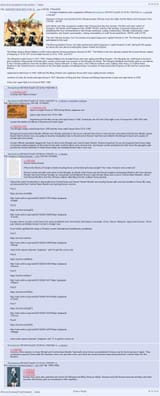Search Results
6/20/2025, 2:56:58 PM
>>17778521
>>13982386
>>13983292
>>13983295
>>13983301
Korean history under the Mongol empire
https://desuarchive.org/his/thread/13220256/#q13220256
>13220256
https://desuarchive.org/his/thread/10828773/#q10828773
>10828773
https://desuarchive.org/his/thread/13043204/#q13043204
>13043204
https://desuarchive.org/his/thread/13067378/#q13067627
>13067627 >13071844
https://desuarchive.org/his/thread/12011702/#q12011702
>12011702
https://desuarchive.org/his/thread/13277598/#q13277598
>13277598
No.>13231351
https://desuarchive.org/his/thread/9505389/#q9508255
>9508255
https://desuarchive.org/his/thread/13205503/#q13208522
>13208522
https://desuarchive.org/his/thread/13089506/#q13092548
>13092548
https://desuarchive.org/his/thread/13378501/#q13384800
>13384800
https://desuarchive.org/his/thread/13876154/#q13876415
>13876415
https://desuarchive.org/his/thread/13740348/#q13744483
>13744483
https://www.nytimes.com/2010/11/20/arts/20iht-MELIK20.html
In the ethnically diverse court entourage, jewelry was influenced by far away Iran. The gold filigree ornaments with turquoise-colored insets found in the tomb of an official called Shi Gang are derived from Iranian models. Shi Gang’s father was Chinese but his mother came from the north Asian Jurchen people. An epitaph in the tomb further reveals that his wife belonged to the Turkic Kerait community. The hairpin, the earring and the two rings recovered from the funerary chamber were hers.
Shi Gang’s father had had four spouses. One was Chinese, two were Jurchen and one was Korean. Another large tomb in the Shi family burial ground yielded a Korean celadon porcelain jar of the 13th century.
>>13982386
>>13983292
>>13983295
>>13983301
Korean history under the Mongol empire
https://desuarchive.org/his/thread/13220256/#q13220256
>13220256
https://desuarchive.org/his/thread/10828773/#q10828773
>10828773
https://desuarchive.org/his/thread/13043204/#q13043204
>13043204
https://desuarchive.org/his/thread/13067378/#q13067627
>13067627 >13071844
https://desuarchive.org/his/thread/12011702/#q12011702
>12011702
https://desuarchive.org/his/thread/13277598/#q13277598
>13277598
No.>13231351
https://desuarchive.org/his/thread/9505389/#q9508255
>9508255
https://desuarchive.org/his/thread/13205503/#q13208522
>13208522
https://desuarchive.org/his/thread/13089506/#q13092548
>13092548
https://desuarchive.org/his/thread/13378501/#q13384800
>13384800
https://desuarchive.org/his/thread/13876154/#q13876415
>13876415
https://desuarchive.org/his/thread/13740348/#q13744483
>13744483
https://www.nytimes.com/2010/11/20/arts/20iht-MELIK20.html
In the ethnically diverse court entourage, jewelry was influenced by far away Iran. The gold filigree ornaments with turquoise-colored insets found in the tomb of an official called Shi Gang are derived from Iranian models. Shi Gang’s father was Chinese but his mother came from the north Asian Jurchen people. An epitaph in the tomb further reveals that his wife belonged to the Turkic Kerait community. The hairpin, the earring and the two rings recovered from the funerary chamber were hers.
Shi Gang’s father had had four spouses. One was Chinese, two were Jurchen and one was Korean. Another large tomb in the Shi family burial ground yielded a Korean celadon porcelain jar of the 13th century.
Page 1
